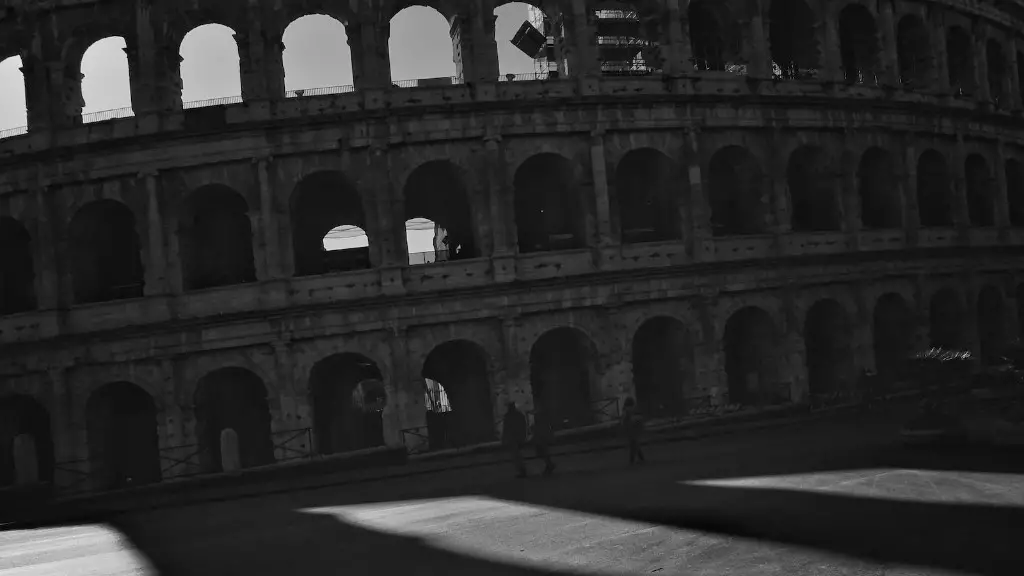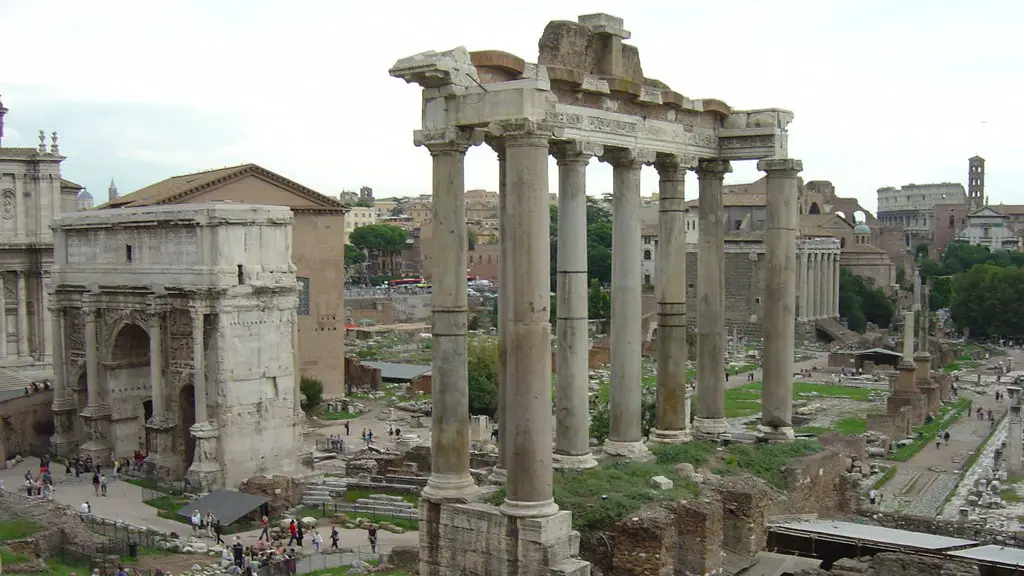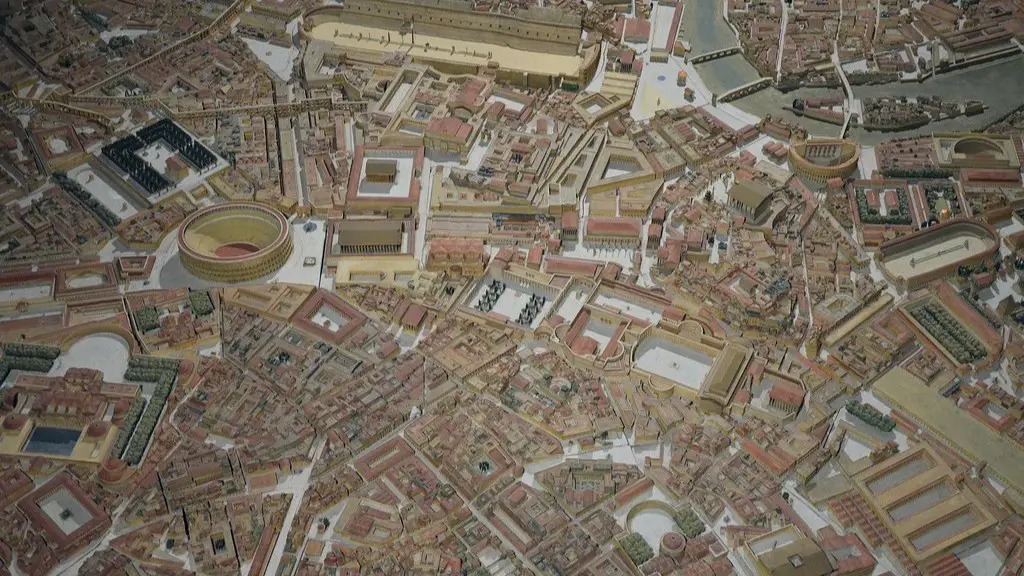Background Information
Ancient Rome was an Italian civilization that began in the 8th century BC and lasted until 476 AD, when it is believed to have fallen. According to scholars, Rome as we know it endured for more than 1,000 years and had a huge influence on Western civilization. During this time, there were a number of claims to power, such as the Republic of Rome, the Roman Empire, and the Eastern Roman Empire. As such, it is important to understand the timeline of Rome, which spanned from the founding on the Palatine Hill in 753 BC to the Roman Empire in 476 AD.
Founding of Rome
The traditional date for the founding of Rome is April 21, 753 BC. According to the legend, the Roman Empire was founded by the two brothers Romulus and Remus. They were the sons of the god Mars and a priestess of the Vestal Virgins. After a series of battles, Romulus would become the first king of Rome by defeating his brother Remus. This day is now celebrated every year in Rome as the founding of the city and is considered the start of the timeline for ancient Rome.
Republican Period
In 509 BC the monarchy of Rome was overthrown and a Republic was founded. This period is known as the Republican period of Rome and lasted for almost five centuries until the rise of Julius Caesar in the 44 BC. During this period, Rome became an incredibly powerful nation and conquered much of the Mediterranean. One of the greatest accomplishments of this time was the construction of numerous wondrous Roman monuments such as the Colosseum and the Pantheon. This was a time of great wealth and power for Rome, which was a major world power.
Imperial Period
In 44 BC, Julius Caesar was proclaimed as the ruler of Rome and brought about the beginning of what we now know as the Imperial Period of Rome. This period lasted until 476 AD when the last emperor of Rome was deposed. During this period, the Roman Empire expanded to become one of the largest empires in history. The Roman Empire included much of Europe and the Middle East, becoming an incredibly influential power.
Christianization of the Roman Empire
In 312 AD, the Emperor Constantine had a vision of the Cross of Christ and converted to Christianity. This was the beginning of the Christianization of the Roman Empire. After that, Christianity replaced Paganism as the dominate religion of the Roman Empire and eventually became the state religion by 380 AD. This had a profound impact on the Roman Empire, as the spread of Christianity brought religious uniformity throughout the empire. Additionally, Christianity fostered a shared cultural identity which unified the Roman Empire and made it stronger.
Decline and Fall of the Roman Empire
The decline and fall of the Roman Empire began in the 4th century AD. There were a variety of factors that contributed to Rome’s downfall, such as political instability, military failure, economic decline, and social and religious upheaval. These factors caused the empire to weaken and led to its eventual collapse in 476 AD. This marked the end of the timeline for ancient Rome and ushered in the beginning of the Middle Ages and the period of European History known as the Dark Ages.
Legacy of Rome
Despite the collapse of the Roman Empire, its legacy and influence on the Western world remains to this day. Rome’s influence is evident in many aspects of modern life, such as language, architecture, law, and politics. Additionally, Roman civilization helped shape many aspects of our modern lives, such as the development of democracy, technology and engineering, and art. The legacy of Rome lives on, and its influence will likely continue for centuries to come.
The Roman Empire on the Silver Screen
The impact of the Roman Empire on Western culture is also evident in modern films. Films about the Roman Empire, often set during its height, are often very successful and involve a large scale epic production. Movies about the Roman Empire and its leaders often depict them in a heroic light and seek to portray the grandeur of the Roman civilization.
Roman Influence on Modern Culture
The Roman Empire has left its mark on modern culture in a number of ways. The Latin language is still used in many fields, including law and the sciences. Roman architecture can still be found in cities all over the world, and its influence can be seen in modern buildings. Additionally, Roman concepts are present in political thought and even in popular culture, such as the use of the Latin phrase “Semper Fidelis” as the official motto of the United States Marine Corps.
Modern Roman Reenactment Communities
Today there are a number of Roman reenactment societies that are dedicated to replicating and preserving the culture, style, and traditions of the Roman Empire. These societies often wear period-accurate clothing, build and use period-accurate equipment, and even host gladiator-style fighting tournaments in which members can participate. Through these reenactment societies, people can gain a better understanding of the history and culture of the Roman Empire and become immersed in its past.
Roman Art and Architecture
The Roman Empire was well known for its art and architecture, which had a profound impact on the Western world. The Roman aqueducts and roads, for example, are still recognizable today as the famous Italian landmarks. Additionally, Roman art was incredibly influential and its influence can still be seen in the works of renaissance and baroque artists. From large sculptures to intricate mosaics, Roman art remains a visible and enduring reminder of the Roman Empire’s influence on the Western world.


